Last night, I went to the movie theater to once again experience one of the most satisfying, mind-blowing cinematic adventures of all time. It’s the film event that has everybody buzzing, the existential phenomenon that has us questioning the very concept of reality.
I’m talking, of course, about the trailer for Charlie St. Cloud.
For two minutes and thirty seconds, director Burr Steers immerses us in a beautiful dreamworld where anything is possible, where dead kids play catch and yachting is a popular competitive sport. Our minds are twisted into knots as we try to decipher what’s real, what isn’t real, and what any of it could possibly mean.
Steers is no stranger to such remarkable philosophical depths. He directed last year’s excellent and thoroughly original trailer for 17 Again, which explored and made profound comment on the concepts of age, identity and how craaazy high school can be.
In the trailer for Charlie St. Cloud, however, Steers goes even deeper. Being transformed into a 17-year-old by a magical suicidal janitor is child’s play compared to the warped journey through varied realms of existence endured by our titular hero (played by Zac Efron, the De Niro to Steers’ Scorsese).
It seems like every conversation at Starbucks, every tweet on Twitter, and every Socratic dialogue on IMDb these days centers around the trailer for Charlie St. Cloud. It’s truly dazzling to overhear the verbal sparring Steers has provoked; what may begin as a civil debate over whether Charlie is simply “like James Dean” or literally a corporeal vessel for James Dean’s wandering spirit inevitably turns into a heated, high-volume and highly personal affair. And while these exchanges are indeed entertaining, I don’t think they do full justice to Steers’ work. As involved and intellectual as they can become, they all seem to merely skim the surface. The truth is much, much deeper.
I believe Charlie himself is the target of an inception. And I believe the inception is being performed by his own brother, Sam.
Ah, but Sam is dead, right? No. But that’s exactly what he wants you (and Charlie) to think.
Bear with me here:
Everything from the opening shot at :08 to the accident at :37 is real. Charlie really is a small town hero, and he really does experience a tragic accident. Everything from the funeral on, however, is Charlie’s coma-induced dream.
Sam’s Red Sox cap lying under the wreckage of Charlie’s car is a nifty bit of misdirection. We project our own meaning onto that image, which is of course that Sam has died. That is the natural conclusion, but it is far from the correct one. The only thing we can safely infer from seeing the cap lying on the ground is that it is no longer on the brother’s head. Everything else is merely circumstantial. Unless the cap is the source of Sam’s life-force (a theory which I’d charitably describe as “unlikely”), there is no reason to believe that its separation from his head is concrete proof of his death. He could just as easily be hatless and alive — and the evidence overwhelmingly supports this conclusion.
Sam escapes the mangled car, sans hat but relatively unscathed, only to find Charlie in a vegetative state. The tragedy of the accident is not Sam’s death, but Charlie’s deep coma — his own personal limbo, if you will. The doctors are unsure if he will ever wake up. Sam simply can’t believe this. What happened to the strong-willed Charlie? The one who yachted with him through thick and thin and was rewarded with a trophy, a photo in the newspaper and a scholarship to Stanford? The same Charlie who once pushed through mildly choppy seas would surely push through something as trifling as a coma, right? Sam suspects something is wrong. Charlie would never lose the will to live unless he lost the most important thing in the world: his brother. Sam deduces that Charlie has dreamed that he (Sam) died in the accident, an imagined trauma so brutal and jarring that Charlie becomes convinced that it is reality. Sam then convinces the doctors to let him enter Charlie’s mind in order to convince him to come back to reality. The real reality.
(My detractors will claim that I’m inventing this entire off-screen scenario myself, but they should really watch the trailer a few more times because IT’S ALL RIGHT THERE IN THE OPEN, PEOPLE!)
Anyway, the funeral scene (:37) is all you need to know that Charlie is in a dream. The immediate jump from the accident to the funeral resembles a dream: we are just there, with no memory of how we got there. The priest’s bizarre request that Charlie drop the glove onto Sam’s supposed corpse is nothing but dream logic: just as one would already be wearing clothes when leaving for school in real life, thus avoiding the surprise anxiety of the common classroom underwear dream, the glove would have already been in the casket; its symbolic value in Charlie’s mind is just too strong for it to be obscured. Everything else follows suit: the usually graceful Charlie’s freakish, clumsy gait as he jogs away from the funeral; the fact that NOT ONE SINGLE MOURNER at the funeral turns to watch Charlie go; Charlie’s arrival in what appears to be an enchanted forest. It all points to a dream that must be stopped.
Sam arrives just in time (:48). While he could have taken any form, he forgoes his expert forging skills and appears as himself. This is an interesting gambit, to be sure. Sam is banking on the fact that Charlie is firmly entrenched in his belief that the dream is reality. Thus, appearing as himself will force Charlie to rationalize his presence as a figment of his own imagination. THIS IS KEY FOR THE INCEPTION TO WORK. If Charlie thinks Sam is part of his own mind, he will trace anything “Sam” suggests to himself. The inspiration will seem genuine, and the idea will stick.
The only way Charlie can leave his comatose limbo is by dying. Thus, the idea must result in Charlie’s death. But for the inception to work, the idea must also be simple. I must commit suicide is simple enough, but might not work because it is a negative emotion; a positive emotion is always stronger than a negative one. When you combine that negativity with Charlie’s steely will, there’s a good chance the suicide idea would be detected as non-genuine, the illusion would be killed and Charlie would never return from his coma. Sam must find an idea that has the same result — suicide — but somehow be delivered via a positive emotion. The answer? A rescue mission. One where the suicide is implicit, not explicit. The goal is positive, but the effects are negative (while actually being positive).
And so Sam begins to feed Charlie this idea: I must rescue Tess. Who is Tess, you ask? Like Bobby Fischer at a chessboard, Sam is thinking several moves ahead.
The next step is to introduce somebody into Charlie’s dream that he will believe is real and would do anything to rescue, no matter how dangerous and life-threatening the conditions. This, of course, cannot be Sam, as he fits only the latter of the two criteria. So Sam does the next best thing and brings a hot girl: Tess (1:14). In reality, she is an actor in the local repertory theatre company, but in the dream, she’s an ambitious sailor chick. Sam hires her to play Charlie’s perfect match.
Tess is also there to remind him what he’s giving up by staying in the dream, by believing his brother is dead: sailing, Stanford, everything. She is planting seeds in his subconscious (1:20-1:40). She is making him realize what he has to live for, regardless of whether Sam is dead or alive. Ironically, by giving Charlie something to live for, Sam is pushing him closer to killing himself.
In a further irony, while Charlie loses the will to live in real life, he is too strong-willed in the dream reality to simply commit suicide. So Sam continues to feed Charlie bits of information that push him closer to a more noble and valiant death (keep in mind that Sam believes this all to ultimately be from his own mind): that the girl’s gonna sail around the world, that Charlie likes the sailor girl, that Charlie can do this, that Charlie has to make her pizza.
It all comes to fruition when Charlie and Tess kiss (1:41).Tess finally becomes the person Charlie would do anything to save. Notice how she clearly anticipates what is supposed to be totally spontaneous. This is evidence for both her real-life occupation as a mediocre local thespian and the idea that Sam plotted out the entire relationship beforehand.
Tess says she wants Charlie to come with her on her journey around the world. In reality, Sam has anticipated that Charlie will be scared to let go of him and refuse, believing that it would be cathartic enough to erase Sam’s ghostlike visage from his mind. “The more I’m in your world,” he tells her, “the less I can be in his.” He is stuck in a paradox: the catharsis he so desperately needs and craves would kill the only bit of Sam left, thus sending him spiraling further into depression and madness. This is what we in the business call a “shitty catharsis.”
Now the final pieces are in place. Tess gets lost at sea. Sam tells Charlie he has to go, which makes Charlie tell himself that he has to find her. At any cost. Even after the Coast Guard calls off the search. Even when he’s told “no one can survive these waters.” To Charlie, survival is no longer necessary. He knows he might die. We now know that the inception has been successful. Death has become an option and, more importantly, he believes that it was his own idea to make it one. He trusts his heart. “This is why I was given a second chance,” he tells himself, before removing his shirt and plunging to his watery doom.
The clouds (CLOUDS! IT’S ALL THERE!) part, and the last shot we see is Charlie and Sam, awake and together again. But it is not Sam who has been resurrected. It’s Charlie. “We’ll always be brothers,” Charlie says, patting Sam reassuringly on the shoulder. Little does he know that Sam orchestrated his entire recovery.
So there you have it. The definitive reading of the trailer for Charlie St. Cloud. I would be interested to know if the inception ends up backfiring, growing in Charlie’s mind like a cancer and sending him on an insane sailing expedition in search of a non-existent sailor girl named Tess who looks exactly like an actor Charlie once saw on a poster for the Quincy Bay Players’ production of Private Lives. I guess we’ll just have to wait for the trailer for Charlie St. Cloud 2 to find out.


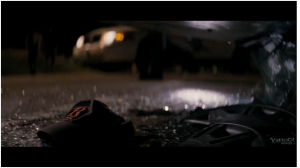
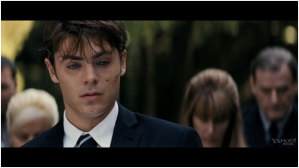
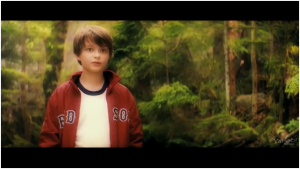
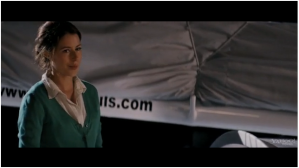
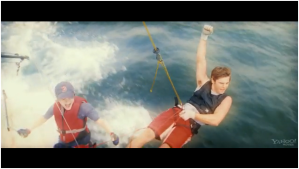
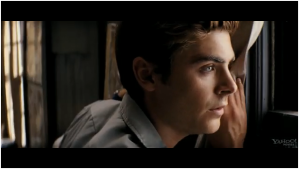
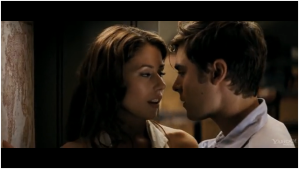
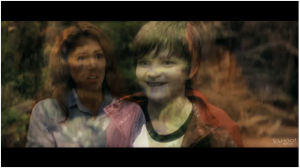
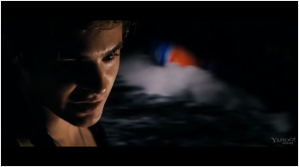
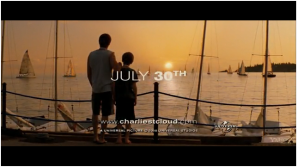
Pingback: Tweets that mention “Dare you take a leap of faith?” « THOSE PEOPLE COMEDY -- Topsy.com
Pingback: Top Posts — WordPress.com
/slowclap
Wow! Now THAT is going to be an awesome film! Although… you’ve sort of given the whole plot away now, so I probably won’t go and see it…
Haha!! I think your scenerio made the movie more interesting
Pingback: Escaping The Mind-Maze Of The Charlie St. Cloud Trailer | Videogum
I think my favorite bit is “Everything else follows suit: the usually graceful Charlie’s freakish, clumsy gait as he jogs away from the funeral; the fact that NOT ONE SINGLE MOURNER at the funeral turns to watch Charlie go; Charlie’s arrival in what appears to be an enchanted forest.” Shades of ol’ Savethemooses.
And so begins the Oscar buzz!
You, sir, are a delight.
Well done.
awesome film!
Seem like this is a very good I’d love to see how it turns out. This reading w/help ppl understand the movie. Thanq
lmaaaooooo nice satire
Now THAT is going to be an awesome film! Although… you’ve sort of given the whole plot away now, so I probably won’t go and see it…
nice share 🙂
Pingback: Synesthesia: Charlie St. Cloud Trailer (New Column!) | WGTB
thanks very good site
Pingback: “Dare you take a leap of faith?” (via THOSE PEOPLE COMEDY) « R O C K E T SCIENCE
Pingback: Welcome to Pop Culture Lab Notes « Pop Culture Lab Notes